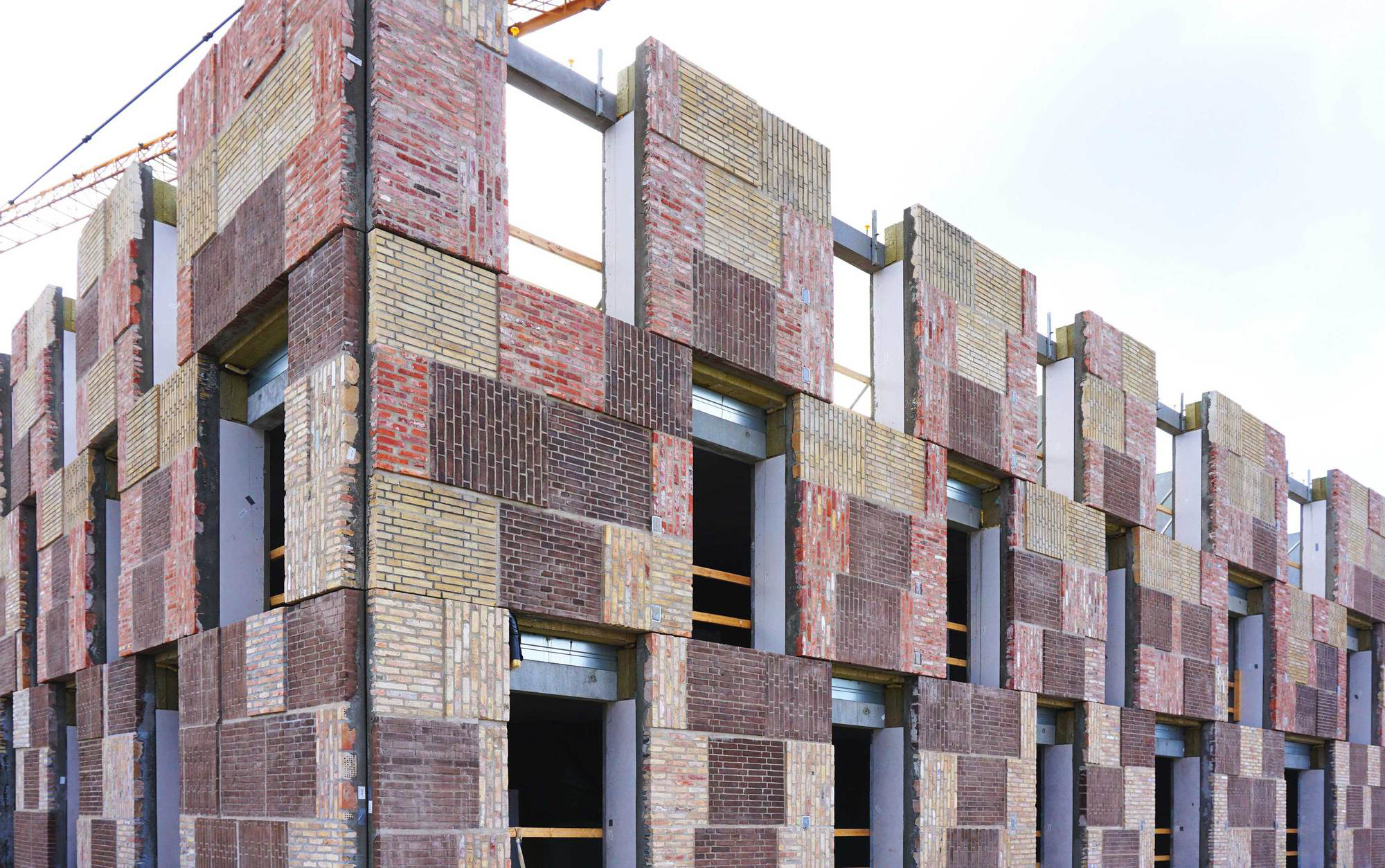Preparing built fabric for a new use
General description
Giving building materials or components a second life requires a sensitive deconstruction and in most cases time- and cost-intensive processes. This includes steps such as: disassembly, cleaning, sorting, testing, cutting, and further modifications for new formats. If possible, materials or components are used as they were found in their first life to keep their maximum value or they are even upcycled.
Examples
Resource Rows
Copenhagen, Denmark
Upcycling can add unique properties such as aesthetic and historic value to new developments. The brick panels were recovered from abandoned buildings in the region and create the unique chessboard pattern of the facade. The approach to recycle bricks from indestructible mortar constructions was developed by the architecture firm’s in-house subsidiary “Lendager up”. The Lendager group unlocked the upcycling potential of cement based mortar brick walls by developing a new system, the “UP Wall”, where a diamond-mounted saw was used to cut out elements of the mortar brick wall with a size of approximately 1x1 m. In comparison to a standard wall, 38% of CO2 was saved in the construction process. In a next step, these cutouts were integrated into sandwich panels where they were reinforced with concrete and insulation was added to meet the requirements of the building code. Timber was used as another recycled material, which was mainly installed on the terrace, in the treehouses, and on the facade. The dark finish of the timber used for the terraces and timber facade elements above the widows was created by burning the upper millimetres of the wood planks (Yakisugi-technology) and afterwards impregnating them with linseed oil. These measures saved a lot of waste, not only from the demolition site, but also in case the new material would have had to be newly produced. In total, Lendager Group claims to have saved 12% of CO2 emissions compared to a conventional building.